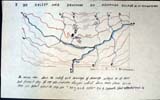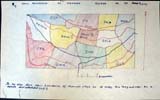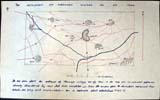|
Location Index
0.1
|
| Mubimambila Essays |
| Ndalbon, Samuel N. 1976 Mbamnga village in 1900 and 1976. A study in Historical Geography. Department of Geography, Teacher's College, Mubi Unpublished Local Study |
: pop c 8000 1963 censu = 7932 10 Before 1900 group callled Julro from Kimi settled at Ngui. They were later joined by the other grouops who were +/_ hostile eg Fru is "closed" to Julro "because" of a illegitimate pregnancy which "caused" a war between Julro and Fru (in alliance with Bal). The Julro were then driven out of the village, and their site was occupied by people from Fru and some others henceforth called Nguni after the place. The people of Mbar used to live at Gur, but were driven off to their present site by thge people of Duk. 33 Juju in month of May, used to be at Fuh also in November a dance which women cannot see starting at Fuh hen going to Nguni, Kulshin, Fru, Duk and Mbar. 33a No knives etc to sacred enclosures, stones of fire place must not be moved, must wear trad. dress when entering. Else get ill unless pay goat! Old belief: if swallow saliva while on path crossing sacred enclosure then cough will enter family. Water from Kulshin stream (rising to N/w of village) given to new born baby. Also called "nemoh meh" = water of mother. The Fu stream (N of village) called Nemoh Rumeh = juju's water since pray for rain if it doesnt come at right time by going to enclosure, making medicine then juju goes to drink the water of this stream. Leader of this is called Kamvur Hill called Kielshin to N, and to S a hill with standing stone are sacred - ancestors? Could not burn grass on them. Cave for shelter in war - standing stones nearby. They also hid in the grass on the hilll. The skulls of witches were thrown into the forest in the centre. The Toma people are believed to have "migrated" into the pond following a woman who had married a man from "in there" About 3/4 of the Toma went, the rest are scattered among the rest of Mbamnga. |
|
|
|
© Copyright 2006 Kent University & the Author |



